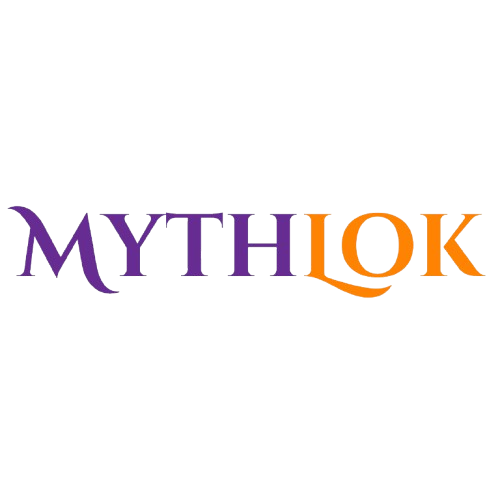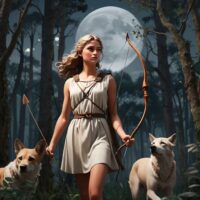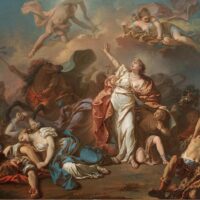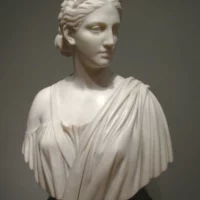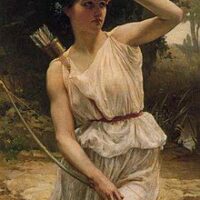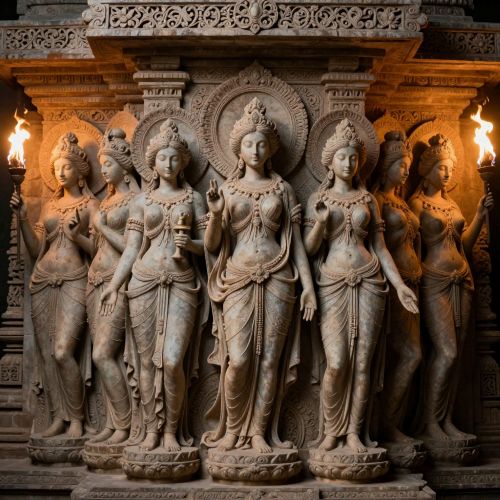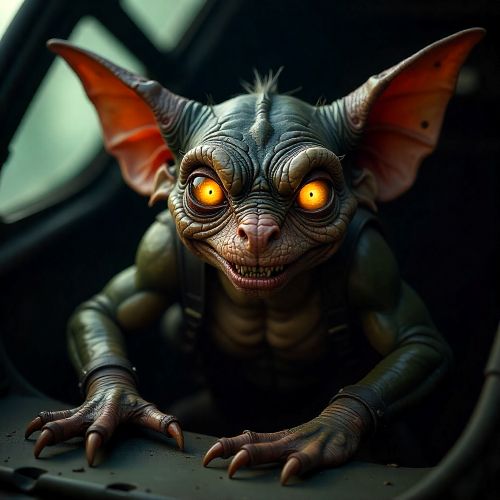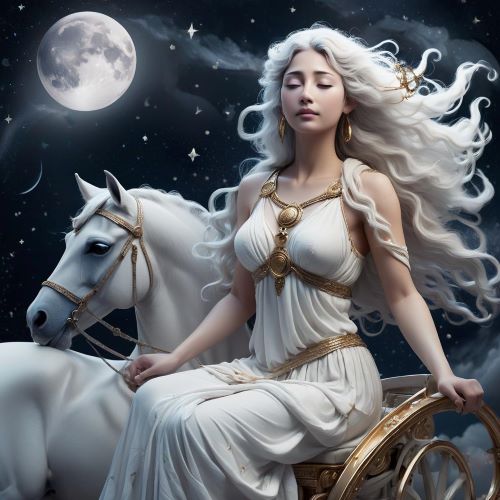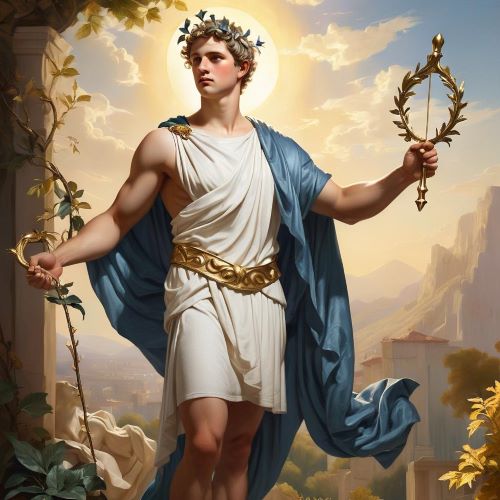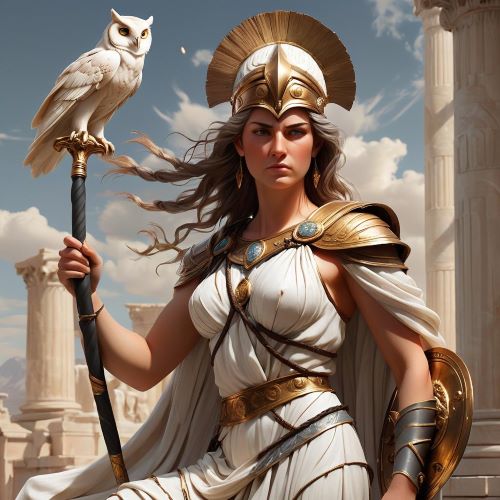Diana : Goddess of the Hunt
Listen
At a glance
| Description | |
|---|---|
| Origin | Roman Mythology |
| Classification | Gods |
| Family Members | Jupiter (Father), Latona (Mother), Apollo (Brother) |
| Region | Italy |
| Associated With | Hunting, Weaponry |
Diana
Introduction
Diana, a central figure in Roman mythology, is revered as the goddess of the moon, the hunt, nature, chastity, and childbirth. Her attributes closely align with those of the Greek goddess Artemis, though their mythological stories diverge in certain details. Diana is celebrated as the guardian of the wilderness and its creatures, holding special significance for those who cherish the land and its abundance.
In Roman and Hellenistic traditions, Diana’s influence extends across various realms, including the countryside, wildlife, and crossroads, as well as the night. She embodies both the roles of a fierce huntress and a protector of the natural world, symbolizing strength, independence, and a deep connection to the untamed aspects of nature. Diana’s mythology intricately weaves together themes of fertility, the natural world, and the balance between civilization and the wild, reflecting Roman beliefs about these domains.
Physical Traits
Diana is often portrayed as a youthful and athletic woman with a serene and commanding presence. Her attire is minimalistic, featuring a short tunic and hunting boots, which reflect her deep bond with nature. She is typically shown with a bow and arrow and frequently accompanied by her hunting dogs, highlighting her role as a skilled huntress. Her flowing hair symbolizes her independence and wild spirit, while the crescent moon often appears as a diadem, underscoring her lunar connection.
In Roman art and literature, Diana’s depiction emphasizes her physical vitality and divine purity. Unlike other deities with more elaborate appearances, Diana’s simplicity in dress and natural beauty underscore her role as a guardian of the wilderness. Her athletic build and practical attire, including a quiver of arrows and a bow, align with her protective and untamed nature.
Family
Diana’s family connections are central to her role in Roman mythology. She is the daughter of Jupiter, the supreme deity, and Latona, a Titaness. Her twin brother is Apollo, the god of the sun, music, and prophecy. This sibling bond is pivotal in mythology, representing the interplay between the sun and moon, with Apollo embodying daylight and reason, while Diana symbolizes the night and instinctive aspects of life.
Raised on the sacred island of Delos, Diana’s upbringing alongside Apollo highlights their shared divine heritage and the balance between their roles. Her association with her mother emphasizes her nurturing role in nature, while her relationship with Apollo underscores the harmony between the different forces of the natural world.
Other names
Diana is recognized by various names that reflect her multifaceted roles across different cultures. In Greek mythology, she is known as Artemis, the goddess of the hunt, the moon, and chastity. The Etruscans referred to her as Artume, while in Egyptian mythology, she is associated with Bastet. In Roman tradition, Diana is also known by several epithets that highlight different aspects of her divine influence.
Among her Roman names, Trivia emphasizes her connection to the three phases of the moon—waxing, full, and waning. Lucina underscores her role in aiding childbirth, while Cynthia links her to her birthplace on Mount Cynthus, Delos. Phoebe reflects her lunar association, connecting her to an earlier moon goddess. These names collectively illustrate Diana’s diverse roles, from hunting and nature to childbirth and lunar aspects.
Powers and Abilities
Diana, as a major goddess, is endowed with a broad range of powers and abilities that reflect her diverse roles. Her mastery of the hunt is unparalleled, showcasing her exceptional skill in archery and her ability to command and communicate with wildlife. This expertise highlights her deep connection to nature and her role as the guardian of forests and animals. Additionally, her influence extends to the moon, granting her control over lunar cycles, tides, and natural weather patterns.
Diana also plays a vital role in protecting chastity and innocence, particularly among young women, and is revered as a patroness of virgins. Her nurturing aspects are evident in her role as a protector during childbirth, where she is invoked for safe deliveries. Furthermore, Diana’s association with the moon gives her sway over nighttime and its mystical energies, while her healing abilities reflect her connection to the natural world, utilizing its remedies to aid in recovery from ailments and injuries.
Modern Day Influence
Diana’s influence persists in modern culture across various domains. Her portrayal as a strong, independent figure has inspired feminist movements and discussions about gender empowerment. In literature and art, her depiction as a fierce huntress and protector of nature continues to inspire creativity, while her legacy informs contemporary narratives about women’s strength and autonomy.
In popular culture, Diana’s mythological attributes are embodied in characters like Wonder Woman, who channels her strength and commitment to justice, bringing Diana’s essence to a global audience. Her role as a guardian of nature aligns with contemporary environmental advocacy, symbolizing efforts to protect and preserve the natural world. Additionally, Diana’s associations with chastity and independence resonate within feminist discourse, highlighting her influence on gender equality and women’s rights. Her ongoing presence in neopagan practices also underscores her continued spiritual significance.
Related Images
Frequently Asked Questions
What is lorem Ipsum?
I am text block. Click edit button to change this text. Lorem ipsum dolor sit amet, consectetur adipiscing elit. Ut elit tellus, luctus nec ullamcorper mattis, pulvinar dapibus leo.
What is lorem Ipsum?
I am text block. Click edit button to change this text. Lorem ipsum dolor sit amet, consectetur adipiscing elit. Ut elit tellus, luctus nec ullamcorper mattis, pulvinar dapibus leo.
What is lorem Ipsum?
I am text block. Click edit button to change this text. Lorem ipsum dolor sit amet, consectetur adipiscing elit. Ut elit tellus, luctus nec ullamcorper mattis, pulvinar dapibus leo.
What is lorem Ipsum?
I am text block. Click edit button to change this text. Lorem ipsum dolor sit amet, consectetur adipiscing elit. Ut elit tellus, luctus nec ullamcorper mattis, pulvinar dapibus leo.
What is lorem Ipsum?
I am text block. Click edit button to change this text. Lorem ipsum dolor sit amet, consectetur adipiscing elit. Ut elit tellus, luctus nec ullamcorper mattis, pulvinar dapibus leo.

